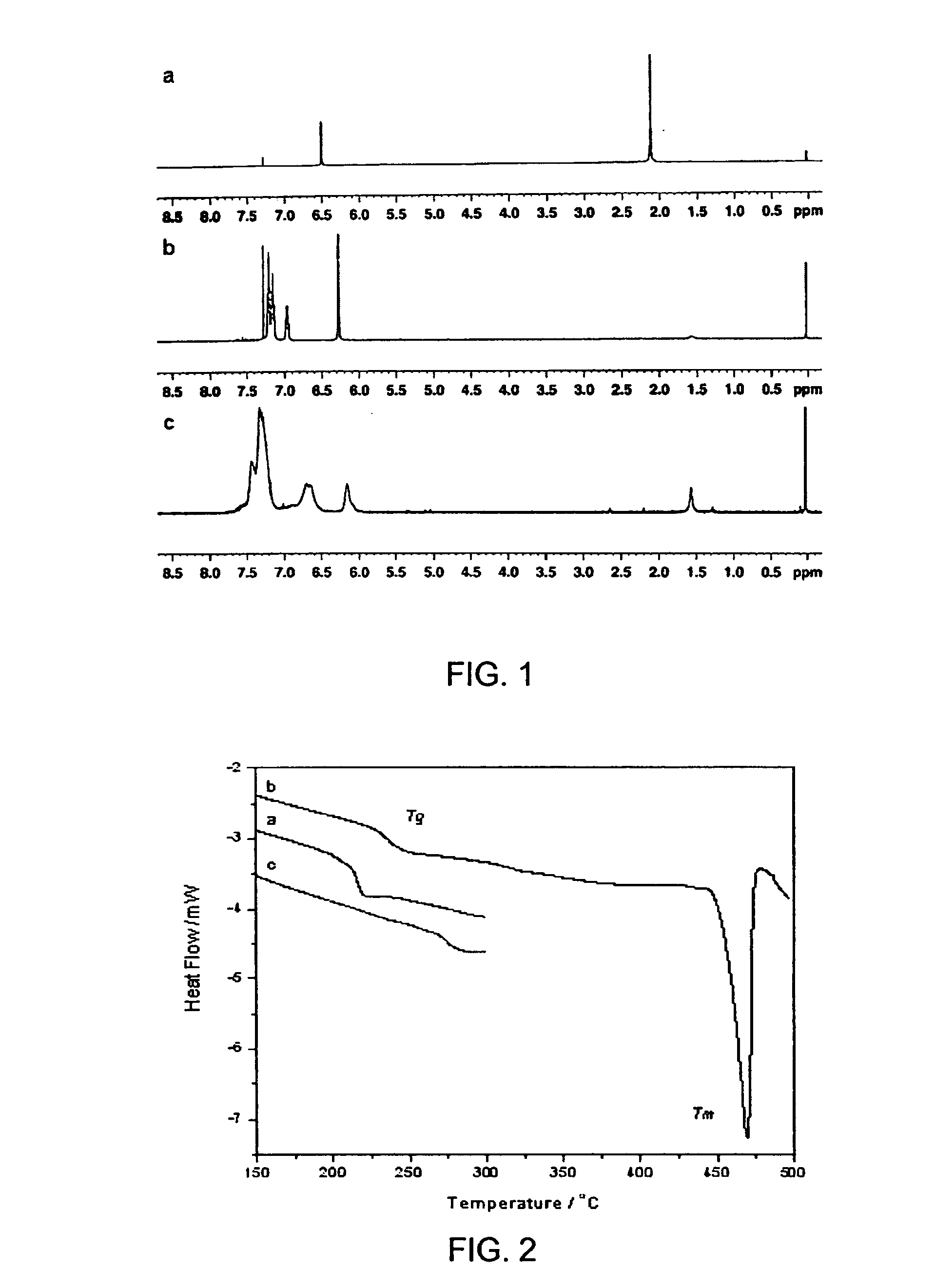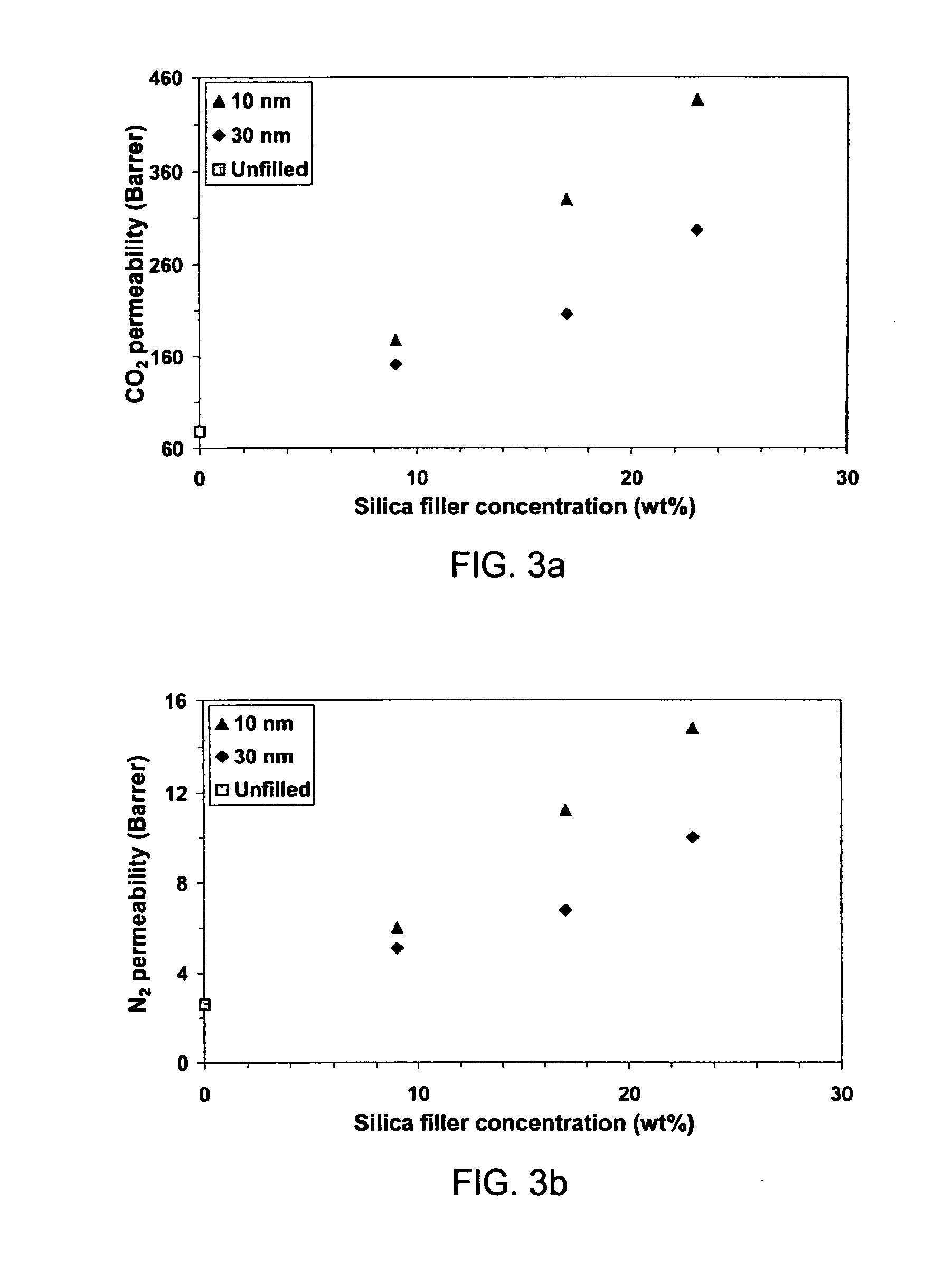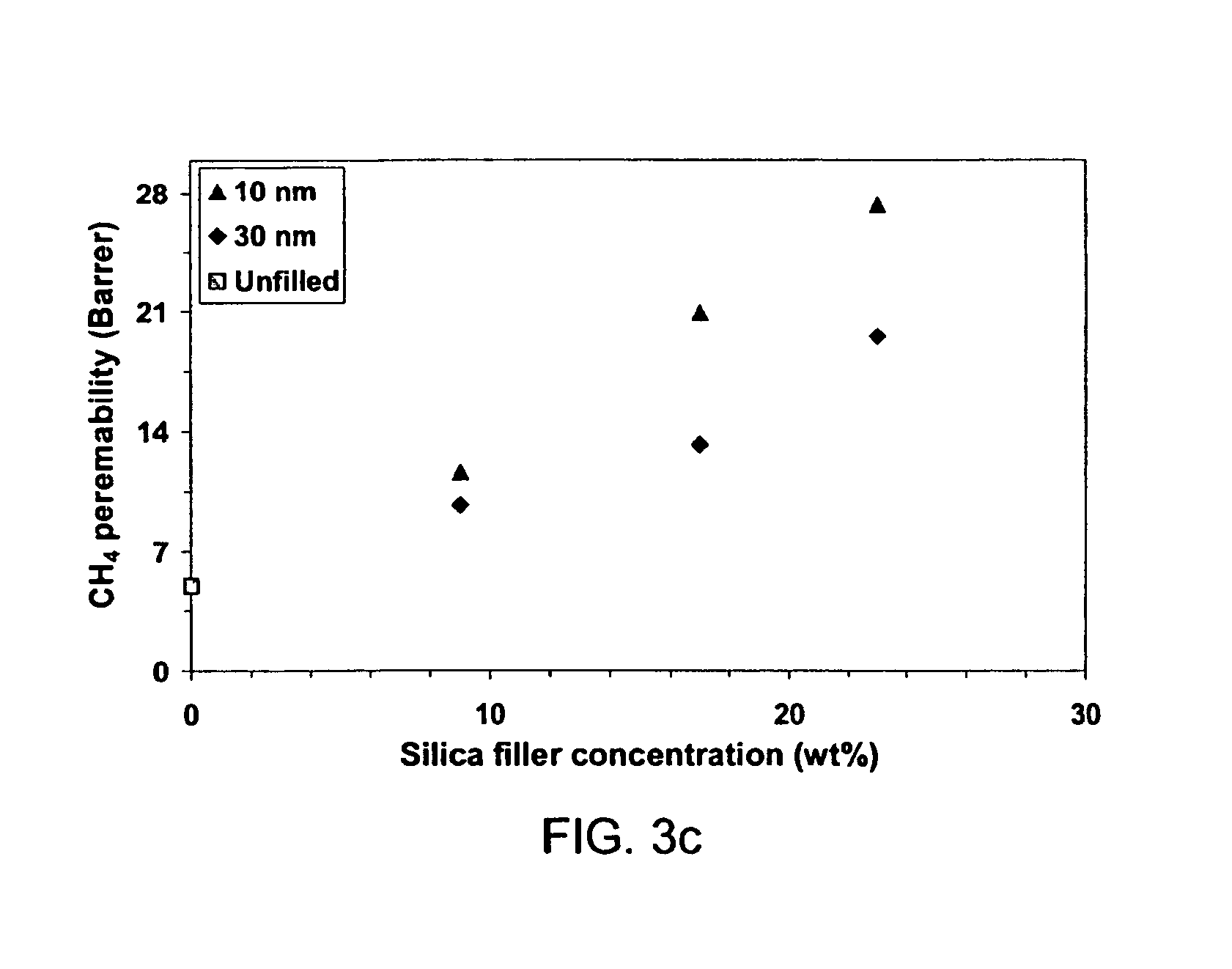Brominated poly (2, 6-diphenyl-1, 4-phenylene oxide) and its nanocomposites as membranes for co2 separation
- Summary
- Abstract
- Description
- Claims
- Application Information
AI Technical Summary
Benefits of technology
Problems solved by technology
Method used
Image
Examples
Embodiment Construction
Experimental Approach
[0009]Chemicals: PPO (Mn˜25000, polydispersity˜2.0), 2,6-diphenylphenol (98%), N,N,N′,N′-tetramethylethylenediamine (TMEDA, 99%), bromine (Br2, 99.5+ %), chloroform (CHCl3, 99.8%), methanol (99.8+ %), ethanol (99.5% +), 1,2-dichlorobenzene (99%), anhydrous hydrazine (98%), silicon dioxide nanopowder (SiO2, 10 nm, 99.5%) were purchased from Aldrich and used as received. Copper(I) chloride (CuCl, 93.2%), which was purchased from J. T. Baker Chemical Co., was stirred with glacial acetic acid, filtered, washed with ethanol, and dried.
[0010]Synthesis of DPPPO: Synthesis of DPPPO was carried out according to the method of Hay. In a typical procedure, 0.041 g of CuCl, 0.031 g of TMEDA, 2 g of anhydrous magnesium sulfate, and 35 ml of 1,2-dichlorobenzene was added to a 100 ml flask. The flask was placed in an oil bath at 65° C., stirred, and saturated with oxygen for 10 min. When the solution turned green, a solution of 5 g of 2,6-diphenylphenol in 40 ml of 1,2-dichloro...
PUM
| Property | Measurement | Unit |
|---|---|---|
| Gas permeability | aaaaa | aaaaa |
| Gas permeability | aaaaa | aaaaa |
| Gas permeability | aaaaa | aaaaa |
Abstract
Description
Claims
Application Information
 Login to View More
Login to View More - R&D
- Intellectual Property
- Life Sciences
- Materials
- Tech Scout
- Unparalleled Data Quality
- Higher Quality Content
- 60% Fewer Hallucinations
Browse by: Latest US Patents, China's latest patents, Technical Efficacy Thesaurus, Application Domain, Technology Topic, Popular Technical Reports.
© 2025 PatSnap. All rights reserved.Legal|Privacy policy|Modern Slavery Act Transparency Statement|Sitemap|About US| Contact US: help@patsnap.com



